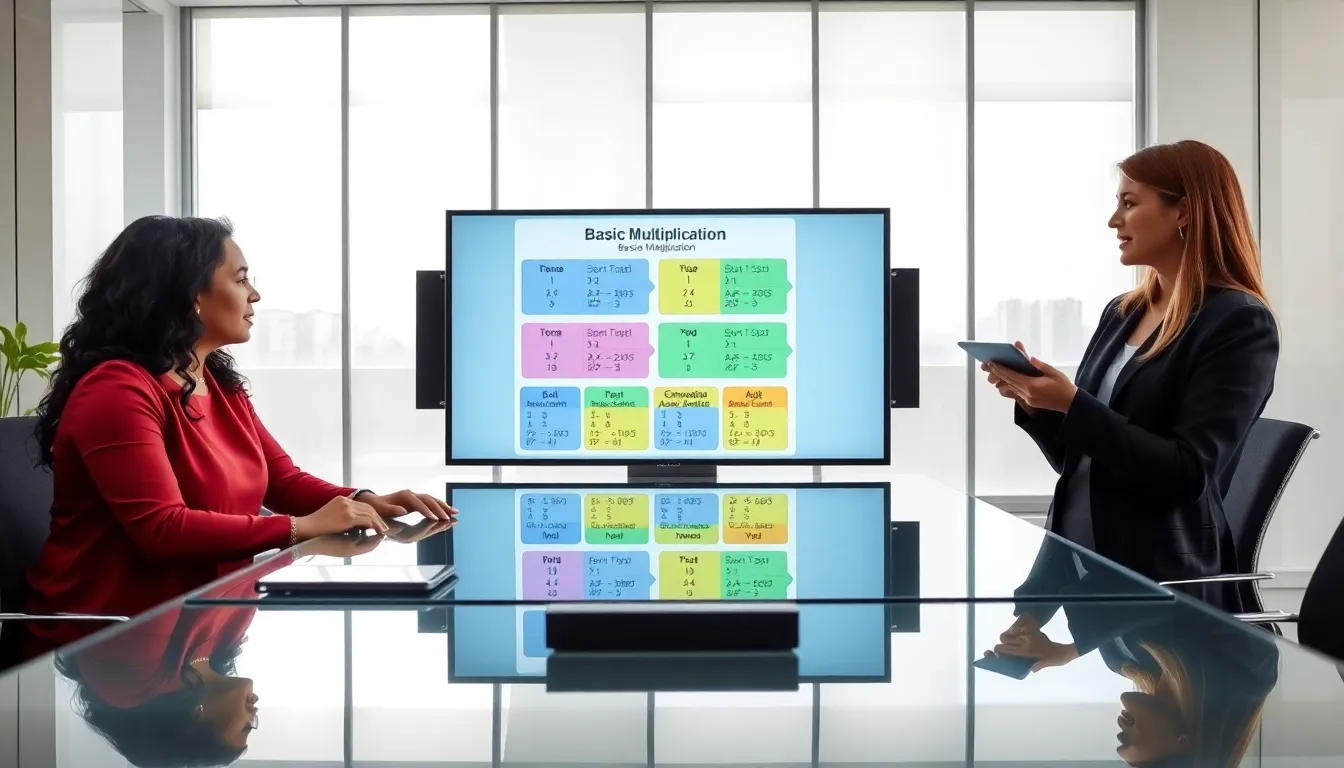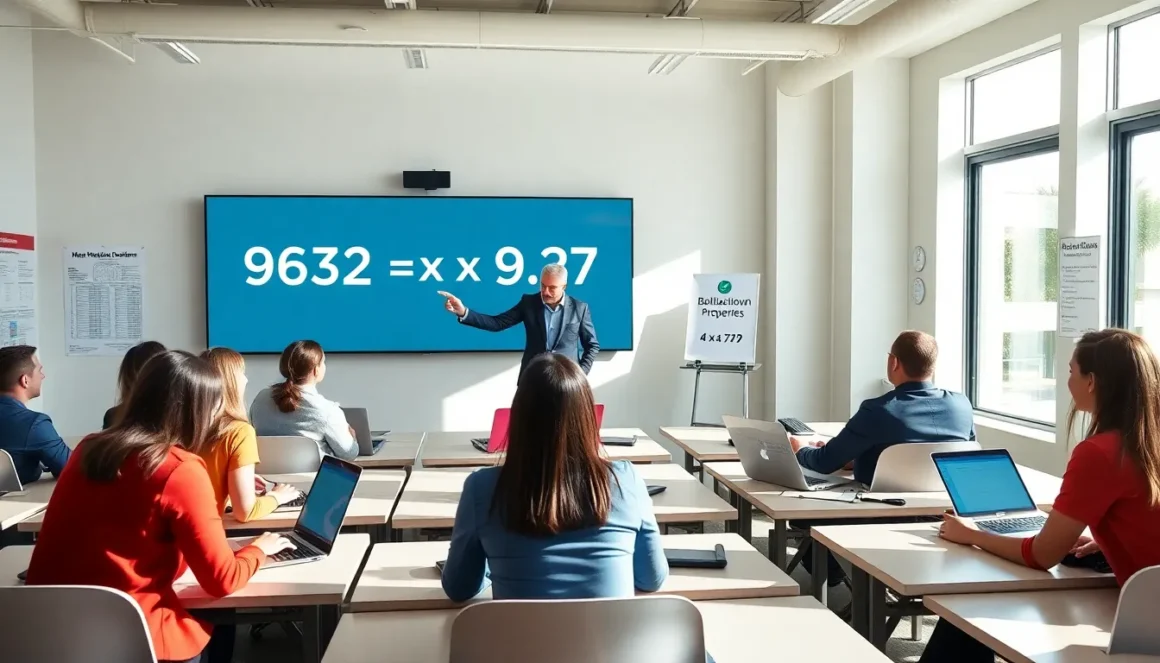When faced with the challenge of multiplying large numbers like 9632 x 97, the initial reaction might be to reach for a calculator or to bolt for the nearest exit. But, multiplying does not have to inspire a mild panic attack. With the right techniques in hand, this seemingly challenging job can turn into a fun challenge that allows you to flex your mental muscles. In this text, we’re diving deep into the world of multiplication, unearthing everything from basic concepts to slick shortcuts. Let’s transform those numbers into magic.
Whether you’re a student trying to ace your math exam or simply someone who wants to impress friends at dinner parties with your newfound skills, this comprehensive guide to multiplication techniques is tailored just for you.
9632×97

Before embarking on the journey of multiplying 9632 by 97, it is essential to grasp the fundamental concepts of multiplication. At its core, multiplication is a method of adding a number to itself a specified number of times. Take, for instance, the equation 3 x 4. This translates to adding 3 together four times, giving us 12:
- 3 + 3 + 3 + 3 = 12
In essence, every multiplication problem represents a series of repeated addition, providing a solid foundation for understanding larger cases.
It’s also important to recognize the properties of multiplication that will aid in simplifying complex problems:
- Commutative Property: You can swap the numbers around without changing the result (e.g., a x b = b x a).
- Associative Property: When multiplying three or more numbers, it doesn’t matter how the numbers are grouped (e.g., (a x b) x c = a x (b x c)).
- Distributive Property: This allows the breakdown of larger multiplication problems into smaller, more manageable parts (e.g., a x (b + c) = (a x b) + (a x c)).
Familiarity with these properties makes tackling large numbers like 9632 and 97 much easier.
Step-by-Step Breakdown of 9632 x 97
Now that the basics are clear, let’s jump into the detailed breakdown of multiplying 9632 by 97. The process may seem complex, but splitting the numbers into smaller components can simplify it immensely. One effective technique here is the distributive property, which allows us to break apart 97 in a way that’s easy to handle.
Using the Distributive Property for Large Numbers
To use the distributive property, we can express 97 as the sum of 100 minus 3:
- 97 = 100 – 3
Next, we can rewrite our multiplication:
- 9632 x 97 = 9632 x (100 – 3)
Applying the distributive property, we can distribute 9632 across both terms:
- 9632 x 100 – 9632 x 3
Calculating each part gives:
- 9632 x 100 = 963200
- 9632 x 3 = 28896
So, we can combine these results:
- 963200 – 28896 = 934304
So, the final product of 9632 x 97 is 934304. In just a few simple steps, you’ve solved a seemingly complex multiplication.
Simplifying Multiplication with Rounding
Rounding is another fantastic strategy to simplify multiplication, especially when working with large numbers. Imagine we round 97 to the nearest ten, turning it into 100, and then perform the multiplication:
- 9632 x 100 = 963200
This gives us a quick estimate. But, because we rounded 97 up, we need to correct for that when judging the accuracy of our estimate. To find the difference, we look at the negligible impact rounding can have:
- 963200 simplifies the calculation but overestimates the result.
To refine our answer closer to reality, subtract the value we gained from the original rounding:
- 100 – 3 = 97
The earlier multiplication calculation yields:
- 963200 – (9632 x 3 = 28896)
So, confirming that the use of rounding offers a fast way to arrive at a reasonable approximation without diving deep into complex calculations.
Comparing Traditional and Mental Math Methods
With smartphones and calculators at our fingertips, one might wonder whether it’s worth honing mental math skills. Both traditional multiplication techniques and mental math have their advantages, particularly concerning numbers like 9632 and 97.
Traditional methods, like the long multiplication taught in schools, provide accuracy and a step-by-step framework that helps solidify understanding. This approach works well for standardized tests or in situations where technology fails.
On the other hand, mental math empowers individuals to perform calculations quickly, sharpening cognitive skills and enhancing memory. Techniques like breaking numbers down into simpler parts (like we did with distributive property) and rounding help in achieving quicker results. Consider:
- Mental Math: Good for on-the-spot calculations and quick estimations.
- Traditional Methods: Great for accuracy, especially useful in academic or professional settings.
Eventually, combining both approaches creates a well-rounded repertoire for tackling multiplication tasks with confidence.
Practical Applications of Large Number Multiplication
Seeing how concepts apply to real-world scenarios can truly enhance understanding. Large number multiplication like 9632 x 97 comes into play in various fields:
- Finance: For calculating large investments or expenses in budgeting.
- Construction: When figuring cost estimates based on material prices.
- Data Analysis: In translating raw data into meaningful information.
One practical example is managing the budget for a small business. For instance, if a restaurant expects to serve 9632 customers over a year and anticipates that each meal will average around $97, multiplying these figures contributes to evaluating the total yearly revenue:
- 9632 x 97 = 934304
This means the restaurant projects a revenue of $934,304 in a year, helping with financial planning and growth strategies. Multiplying large numbers directly influences decision-making and financial forecasting.


